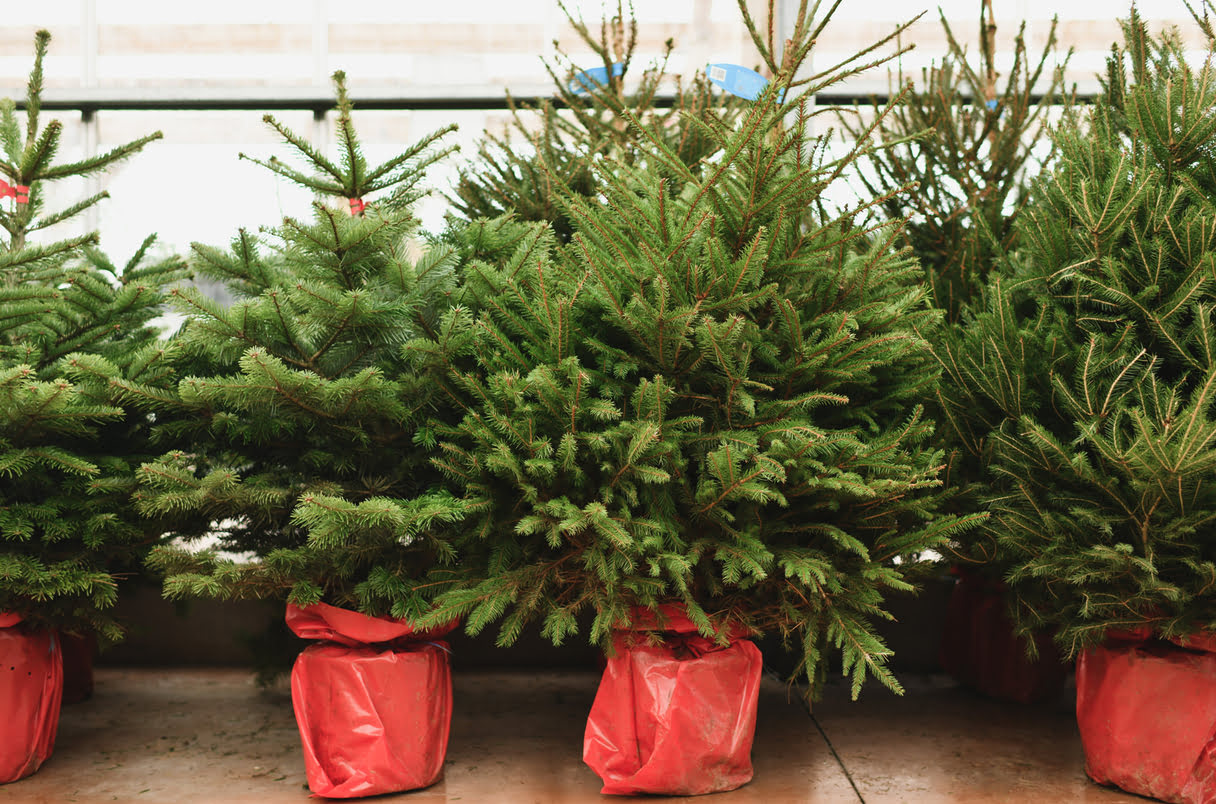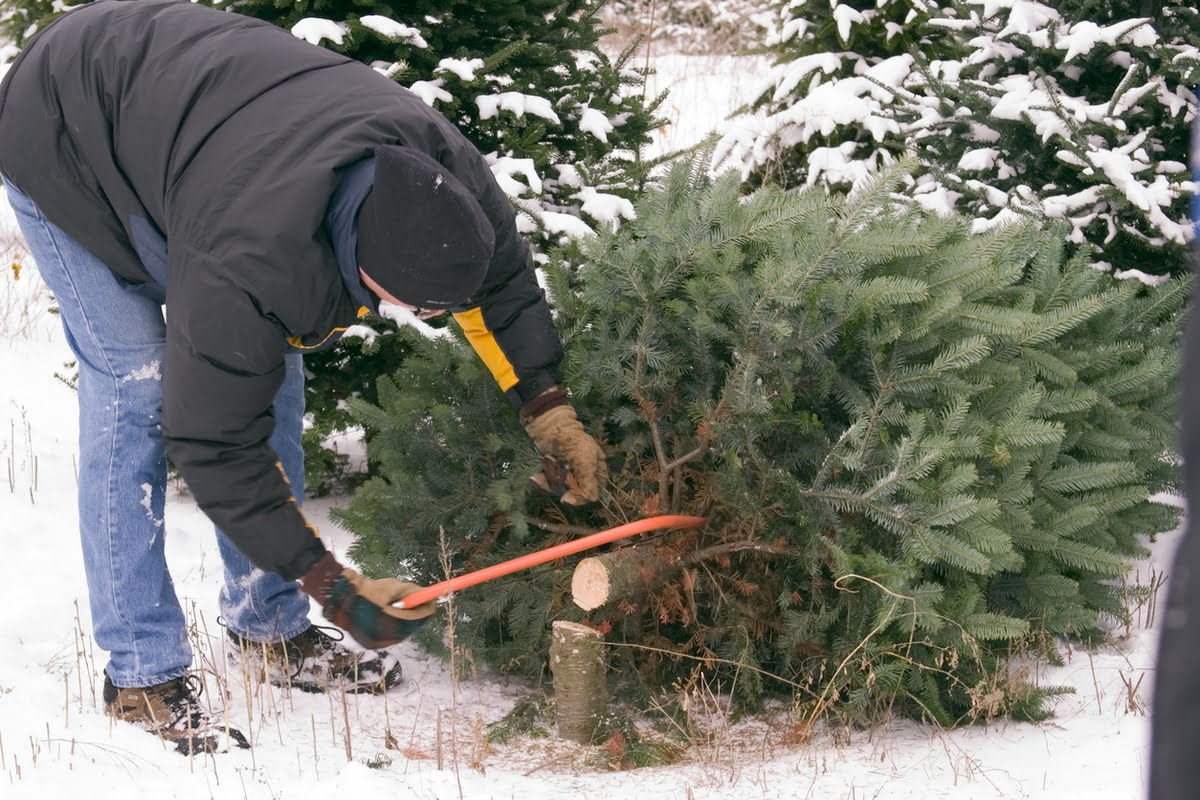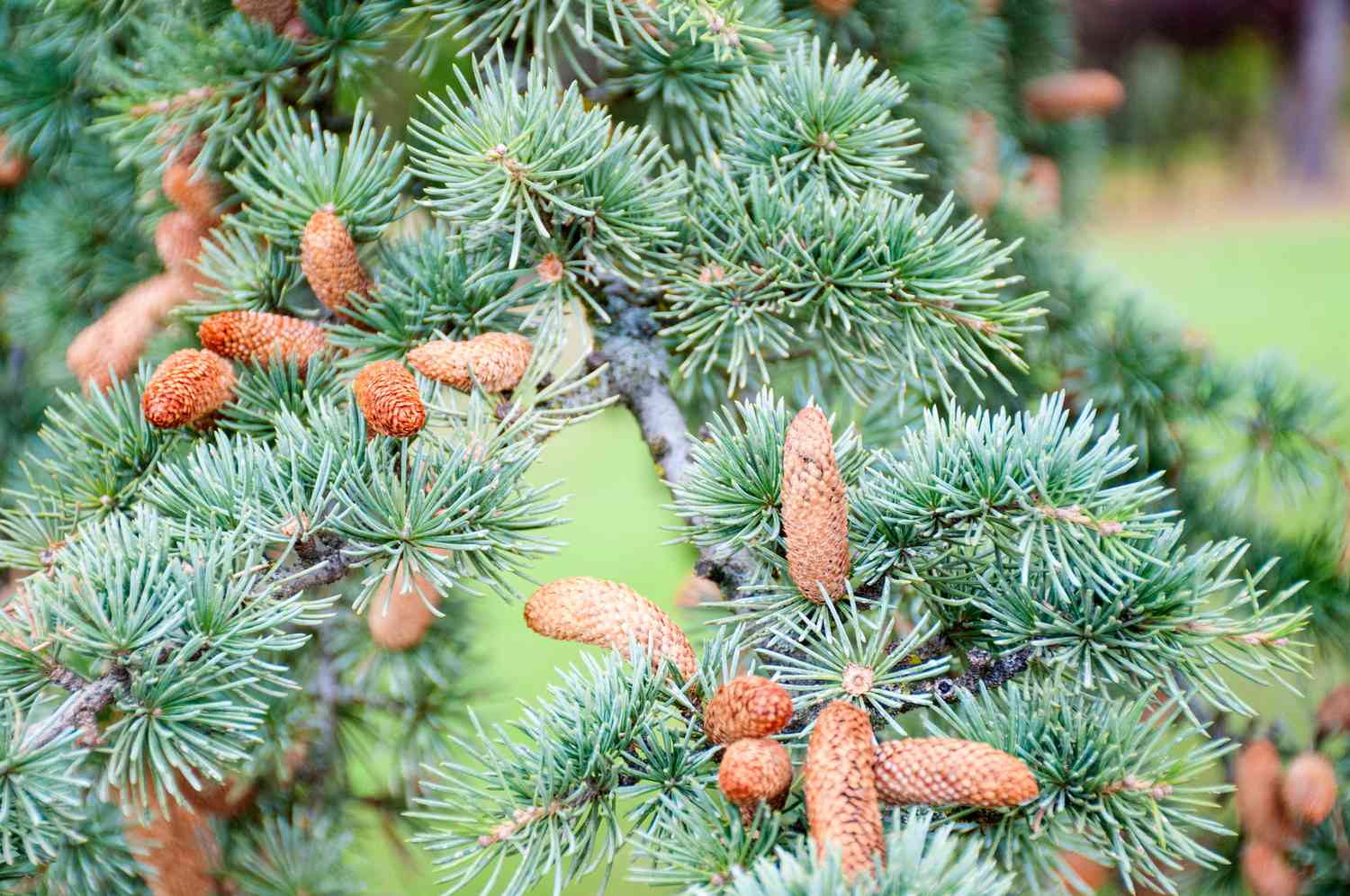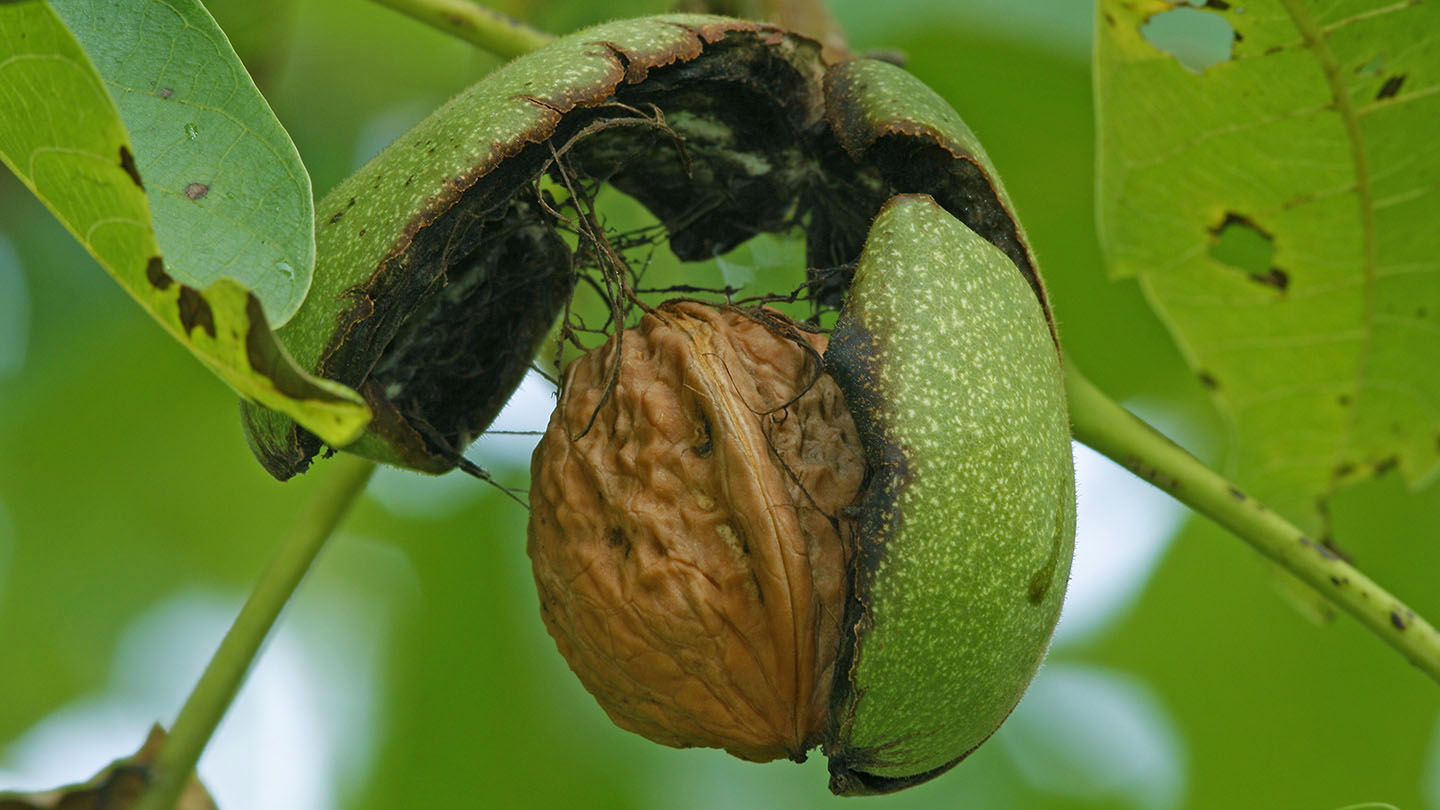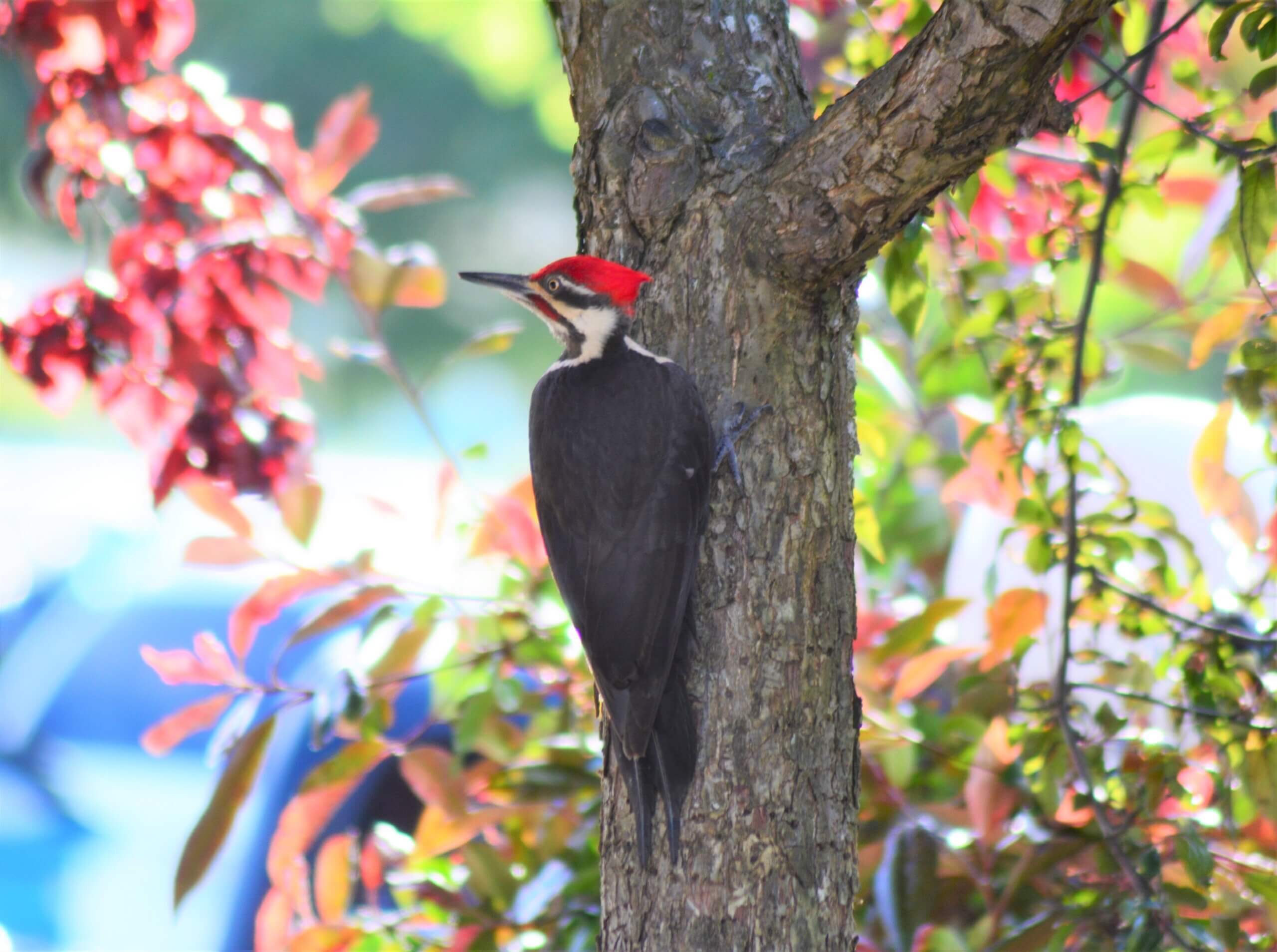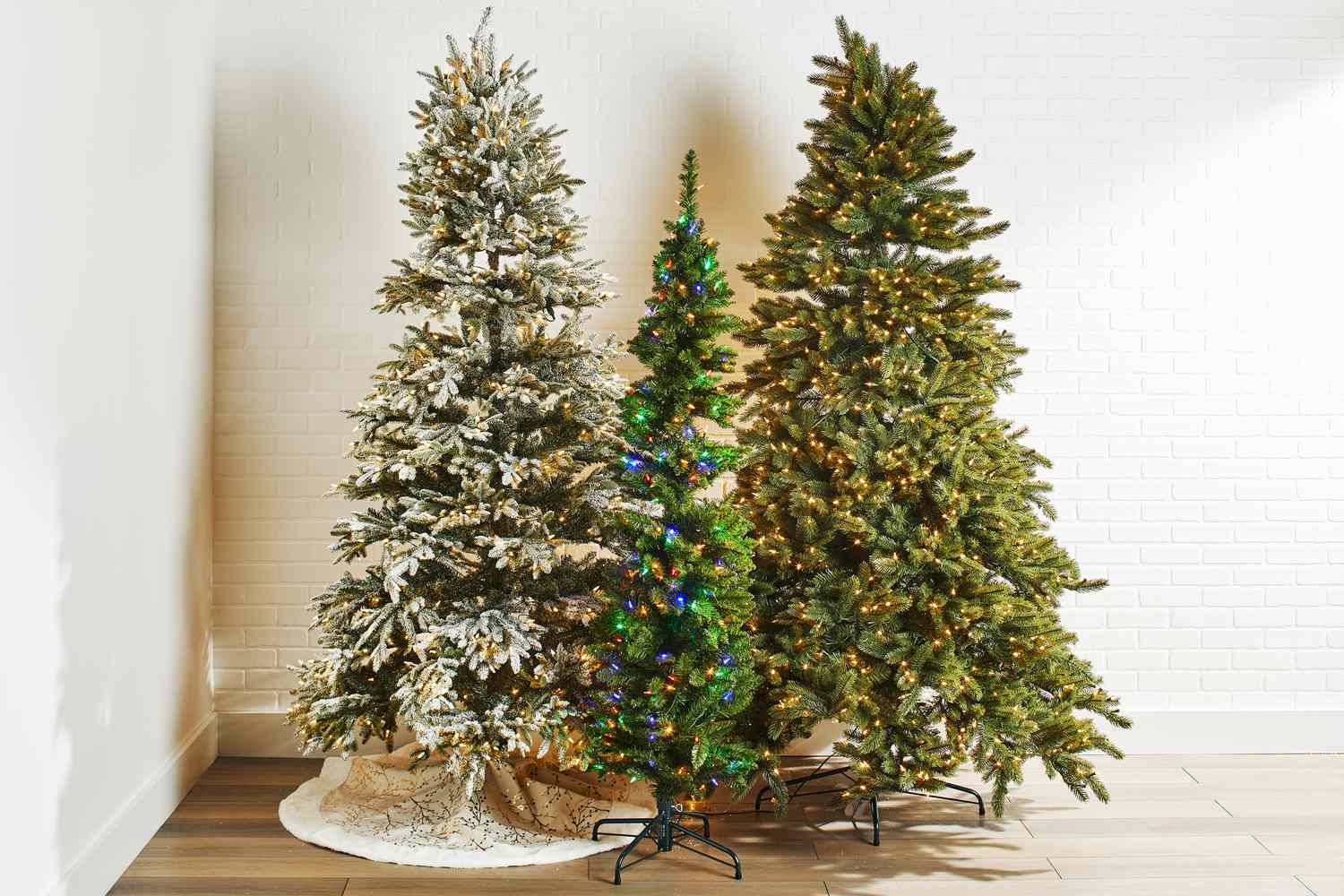Home>Gardening News and Trends>Latest News>Why Do Cats Like Christmas Trees
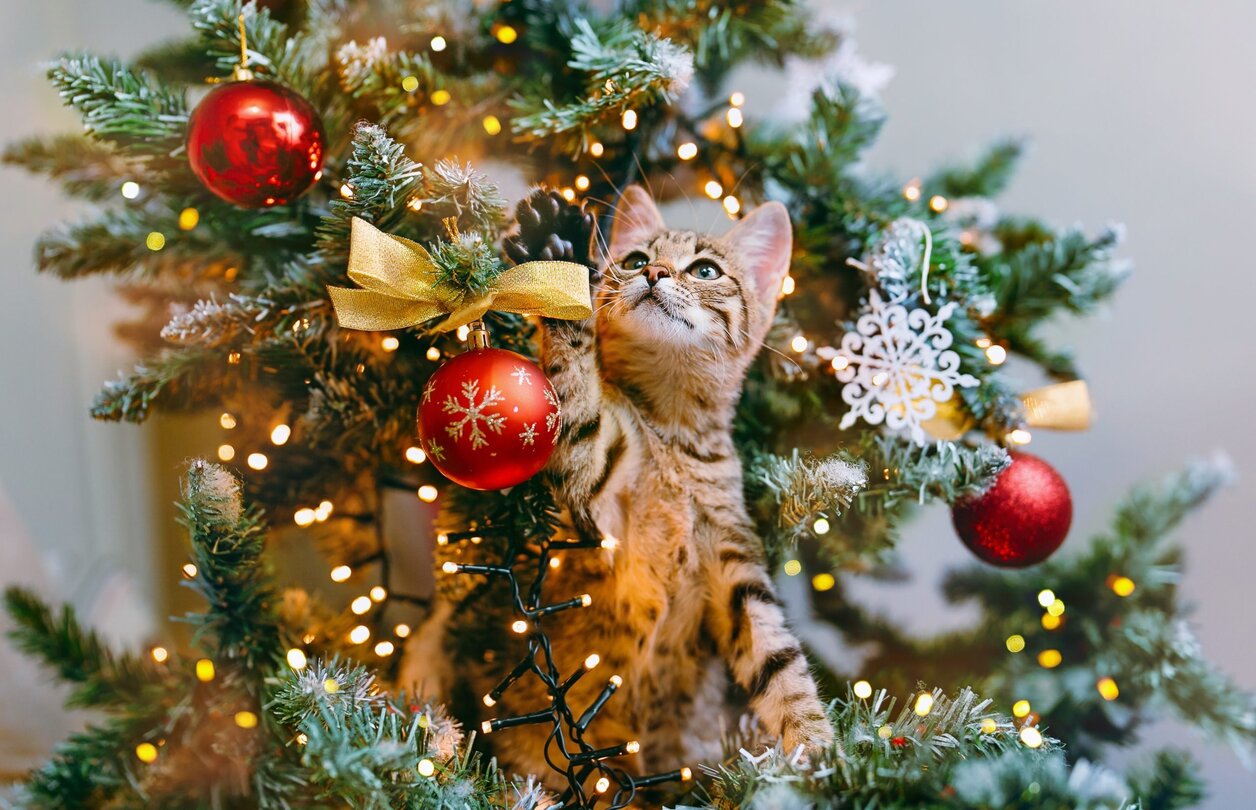

Latest News
Why Do Cats Like Christmas Trees
Modified: January 22, 2024
Discover the latest news on why cats have a fascination with Christmas trees and learn the possible reasons behind this adorable yet mischievous behavior.
(Many of the links in this article redirect to a specific reviewed product. Your purchase of these products through affiliate links helps to generate commission for Chicagolandgardening.com, at no extra cost. Learn more)
Table of Contents
Introduction
Christmas is a joyous time of year filled with decorations, festive lights, and of course, the beloved Christmas tree. As we prepare our homes for the holiday season, we often find ourselves enchanted by the beauty and symbolism of the Christmas tree. However, there is one member of our household who seems to have an inexplicable fascination with this seasonal centerpiece – our feline friends.
Cats have a natural curiosity that leads them to explore their surroundings and investigate anything new or intriguing. It is no wonder that when a Christmas tree enters the picture, it becomes an irresistible attraction for our feline companions. From the glittering ornaments to the twinkling lights, the Christmas tree provides a plethora of visual and sensory stimuli that cats simply cannot resist.
In this article, we will delve into the reasons behind why cats are so drawn to Christmas trees. We will explore their curiosity, their instinctual behaviors, and the various features of a Christmas tree that appeal to our feline friends. Additionally, we will also examine the potential hazards and safety considerations that come with allowing our cats to interact with the Christmas tree.
The Fascination with Christmas Trees
There is something magical about the presence of a Christmas tree in our homes during the holiday season. From the moment we bring it indoors and begin to adorn it with lights, ornaments, and garlands, it becomes the focal point of our festive decor. It is no wonder that cats, with their innate curiosity, are captivated by this towering symbol of the season.
One of the main reasons why cats are so fascinated by Christmas trees is their instinctual attraction to visually stimulating objects. The twinkling lights, shiny baubles, and dangling ornaments are like catnip for our feline friends. These moving objects draw their attention and engage their hunting instincts, making the Christmas tree an irresistible target for exploration and play.
Furthermore, the presence of a Christmas tree in the home also brings about a change in the environment that cats find intriguing. The rearrangement of furniture to accommodate the tree, as well as the addition of new scents and textures, pique their curiosity and create a sense of novelty. The Christmas tree stands out as a unique and fascinating feature, luring cats to investigate and interact with it.
Additionally, cats are known for their love of heights and vertical spaces. The Christmas tree provides them with an opportunity to climb and survey their surroundings from a vantage point. Cats are naturally curious creatures, and the height of the tree satisfies their need for exploration and a sense of security. It is not uncommon to find a mischievous cat perched on a branch, observing the world below, or swatting at the ornaments as they dangle enticingly.
In summary, the fascination with Christmas trees can be attributed to several factors. The visual appeal, the rearrangement of the environment, and the opportunity for climbing and exploration all contribute to a cat’s irresistible attraction to this seasonal centerpiece. Understanding and appreciating their curiosity can help us create a safe and enjoyable holiday experience for both our feline companions and ourselves.
The Curiosity of Cats
Cats are famously curious creatures, driven by their innate instincts to explore, investigate, and interact with their surroundings. This natural curiosity is a key factor in their fascination with Christmas trees. From the moment a tree is set up in the home, cats are immediately drawn to it, unable to resist the urge to explore and engage with this new and intriguing addition to their environment.
Curiosity is deeply ingrained in a cat’s nature. Their acute senses enable them to notice even the slightest change or movement in their surroundings. When a Christmas tree is brought into the home, it is a visual and sensory feast for cats. The flickering lights, glittering ornaments, and the scent of fresh pine are all captivating to their curious nature.
Cats have a strong desire to investigate any new object or change in their environment. They are meticulous in examining every nook and cranny, using their keen sense of smell and touch to gather information about their surroundings. The presence of a Christmas tree introduces a novel and unfamiliar element into their territory, triggering their innate need to investigate and understand their surroundings.
Moreover, cats are highly observant creatures. They are known for their ability to carefully study and analyze their environment before deciding to pounce or engage with an object. When presented with a Christmas tree, cats will often spend hours observing it from a distance, sizing it up, and planning their next move. This behavior is a result of their natural cautiousness and strategic approach to exploring new objects or situations.
It is important to note that not all cats exhibit the same level of curiosity towards Christmas trees. Some cats may simply observe the tree from a distance, while others may actively engage with it in various ways. However, the underlying instinct of curiosity is present in all cats. The level of interaction may vary depending on the cat’s personality, age, and past experiences.
Understanding the curiosity of cats is crucial in creating a harmonious environment during the holiday season. By recognizing their need for exploration and providing alternative sources of stimulation, such as interactive toys or designated play areas, we can help redirect their curiosity away from the Christmas tree while still allowing them to satisfy their natural instincts.
The Attraction to Christmas Trees
The allure of Christmas trees for cats goes beyond their general curiosity. There are specific features of these decorative masterpieces that make them irresistibly attractive to our feline friends. From the textures to the sounds, here are some factors that explain the strong attraction to Christmas trees.
Firstly, cats are naturally drawn to objects with interesting textures. The branches of a Christmas tree provide a variety of textures for them to explore. The roughness of the bark, the prickly needles, and the smooth surface of ornaments all offer a tactile experience that captivates their sensitive paws and whiskers.
The movement and sounds produced by the Christmas tree also appeal to cats’ hunting instincts. From the swaying branches to the jingling bells on ornaments, these stimuli trigger their predatory nature. Cats are hardwired to be attracted to objects that mimic the movements of potential prey, and a Christmas tree can provide just that.
Furthermore, the shiny ornaments and twinkling lights on a Christmas tree create a mesmerizing visual display. Cats, known for their fascination with shiny objects, find themselves captivated by the glittering decorations. They are naturally attracted to the way light reflects off the ornaments and the play of shadows it creates around the tree.
Another aspect of Christmas trees that appeals to cats is their association with playfulness and entertainment. Cats are known for their love of interactive toys and objects that stimulate their senses. A Christmas tree becomes a giant toy in their eyes, with endless opportunities for fun and amusement. They can bat at ornaments, climb the branches, or even hide beneath the tree, turning it into their personal playground.
Lastly, the presence of a Christmas tree provides cats with a sense of comfort and security. Cats are den animals and seek out cozy and enclosed spaces to relax and feel safe. The dense branches and the space beneath the tree create a private and secure hiding spot for cats to retreat to when they are feeling overwhelmed or need some alone time.
By understanding the various factors that contribute to the attraction of Christmas trees for cats, we can better appreciate their fascination and find ways to accommodate their natural instincts in a safe and enjoyable manner.
Exploring and Climbing
One of the primary reasons why cats are so drawn to Christmas trees is their inherent love for exploration and climbing. Cats are known for their agility and their natural inclination to seek out elevated positions. The presence of a Christmas tree provides them with the perfect opportunity to indulge in their climbing instincts.
Climbing is an essential behavior for cats as it allows them to survey their surroundings and establish a sense of security. The tall and sturdy structure of a Christmas tree appeals to their need for vertical territory, satisfying their instinctual desire for a high vantage point.
When faced with a Christmas tree, many cats will instinctively start climbing, using their sharp claws and flexible bodies to maneuver up the trunk and branches. They enjoy the physical challenge and the sense of accomplishment that comes with reaching the top. From there, they can take in the view and observe the activities happening below.
Exploration is another crucial aspect for cats, and a Christmas tree presents an array of interesting elements to investigate. Cats are naturally drawn to the movement and sound produced by the tree’s branches and decorations. They may paw at ornaments, bat at tinsel, or even play with the blinking lights, thoroughly enjoying the interactive experience.
Moreover, the branches of the tree provide cats with an array of platforms and perches for jumping and balancing. They can navigate through the branches with precision, testing their agility and coordination. The various levels of the tree become a challenging and exciting playground for our feline friends.
It is essential to create a safe environment for cats to explore and climb the Christmas tree. Securing the tree to prevent tipping and ensuring that ornaments and decorations are out of reach can help minimize accidents and potential hazards. Providing alternative climbing options, such as cat trees or designated scratching posts, can also redirect their climbing instincts away from the Christmas tree and onto appropriate surfaces.
By acknowledging and facilitating their natural inclination to explore and climb, we can create a harmonious space for our cats while still preserving the joy and beauty of our Christmas trees.
Hunting Opportunities
For cats, the presence of a Christmas tree offers a multitude of hunting opportunities that cater to their instinctual behaviors. From the dangling ornaments to the rustling tree skirt, every element of the tree can become a potential target for their hunting prowess.
Cats are natural predators, and their hunting instincts are deeply ingrained. The movement of objects, particularly those that dangle or sway, triggers their predatory instincts. The ornaments hanging from the branches of a Christmas tree can be perceived as prey-like objects, enticing cats to swat, pounce, and bat at them.
Not only do the ornaments provide a visual stimulus, but their varied textures and materials also contribute to the hunting experience. Cats enjoy the tactile sensations of batting at ornaments made of different materials, such as shiny glass, soft fabric, or lightweight plastic. The different textures simulate the feel of prey, providing a multisensory hunting experience for our feline companions.
In addition to the ornaments, the tree skirt can also attract cats with its rustling sounds and hidden treasures. Cats may stalk and pounce on the skirt, treating it as a potential hiding spot for small critters. This instinctual behavior is reminiscent of their natural hunting techniques, as they wait in anticipation for a potential prey to emerge.
Furthermore, the placement of presents under the tree adds an extra layer of excitement for cats. The rustling sound of wrapping paper and the enticing scents emanating from the gifts simulate the presence of prey, triggering their hunting instincts even further. Cats may paw at the presents, trying to uncover the hidden treasures within.
It is important to be cautious of potential dangers that can arise from a cat’s hunting play around the Christmas tree. Fragile ornaments or ones made of hazardous materials should be avoided to prevent injury or ingestion. Additionally, ensuring that any wires or cords from Christmas lights are securely tucked away and out of reach can prevent accidental entanglement or chewing hazards for cats.
Understanding and appreciating the hunting opportunities that a Christmas tree provides for cats allows us to create a safe and enriching environment. By selecting cat-friendly decorations and taking proper precautions, we can ensure that our feline friends can indulge in their natural hunting instincts while still enjoying the holiday spirit.
Cozy and Hiding Spots
A Christmas tree offers more than just visual appeal and hunting opportunities for our feline companions. It also provides cozy and hiding spots that align with their natural instincts for comfort and security. The dense foliage and sheltered spaces created by the tree’s branches offer cats a multitude of enticing places to relax and retreat.
Cats are den animals, and they seek out snug and enclosed spaces to feel safe and comfortable. The branches of a Christmas tree provide them with semi-enclosed areas where they can curl up and rest. It is not uncommon to find a cat nestled between the branches, finding solace in the privacy and seclusion provided by the tree.
In addition to the branches, the base of the Christmas tree also becomes a favored hiding spot for cats. The space beneath the tree offers a concealed and sheltered area that cats find irresistible. They may choose to hide there to observe their surroundings or to take a break from the bustling activities happening in the home.
Moreover, the tree skirt, often adorned with soft fabric or blankets, adds to the cozy appeal of the Christmas tree. Cats find comfort in the soft textures and may choose to curl up on the tree skirt, creating a warm and snug spot for themselves. It becomes their personal sanctuary, where they can unwind and feel secure.
It is essential to create a safe environment for cats to enjoy their cozy and hiding spots within the Christmas tree. Ensure that the tree is securely anchored to prevent tipping, and avoid using any potentially harmful decorations or materials that could pose a risk to cats. Regularly check for any loose or dangling branches that could potentially harm or startle them.
Understanding and respecting a cat’s need for privacy and personal space can help create a harmonious coexistence between our feline companions and the Christmas tree. By providing them with alternative cozy spots, such as cat beds or blankets, we can redirect their attention while still honoring their natural instincts for comfort and security.
Playfulness and Entertainment
A Christmas tree serves as a source of endless playfulness and entertainment for our feline friends. The various elements of the tree, from the dangling ornaments to the twinkling lights, provide cats with ample opportunities for amusement and engagement.
Cats are known for their naturally playful nature, and the Christmas tree becomes an enticing playground for them. The movement of ornaments swaying in the breeze or the gentle rustling of tinsel captures their attention and triggers their desire to engage in interactive play. They may bat at the ornaments, jump and swat at the branches, or even climb up the tree to add an element of excitement to their playtime.
The twinkling lights of the Christmas tree also add to the entertainment factor for cats. The gentle glow and flickering lights capture their attention, creating a mesmerizing visual display. Cats may spend hours mesmerized by the lights, swatting or playfully chasing after the illuminated reflections.
Furthermore, the presence of a Christmas tree can inspire interactive play between cats and their human companions. Tossing lightweight ornaments or dangling toys from the branches can engage cats in a game of chase or pounce, stimulating their hunting instincts and providing an outlet for their energy. Engaging in play sessions with cats around the tree not only entertains them but also strengthens the bond and creates lasting memories.
Additionally, the Christmas tree can serve as a backdrop for playful interactions between multiple cats in a household. Cats may engage in friendly swatting matches, hide and seek games among the branches, or playful chasing games around the tree. The tree becomes a central gathering point for interactive play and socialization among our feline companions.
While encouraging playfulness around the Christmas tree can be enjoyable for both cats and their human companions, it is important to be mindful of potential hazards. It is crucial to use sturdy and non-toxic ornaments and decorations that won’t break easily or pose a risk of ingestion. Also, ensure that any wires or cords from lights are securely hidden or covered to avoid entanglement or chewing hazards.
Understanding the playfulness and entertainment value that a Christmas tree offers for cats allows us to create a safe and enriching environment. By providing appropriate toys, engaging in interactive play, and ensuring a cat-friendly setup, we can turn the Christmas tree into a hub of enjoyment and excitement for our feline companions.
Potential Dangers for Cats
While the Christmas tree provides joy and entertainment, it is essential to be aware of the potential dangers it can pose for our feline friends. Understanding these potential hazards allows us to create a safe environment and protect the well-being of our beloved cats during the holiday season.
One significant danger is the risk of ingestion or choking. Cats may be curious and attempt to play with or chew on ornaments, tinsel, or any small decorations hanging from the tree. Ingesting these items can lead to a choking hazard or intestinal blockage, requiring immediate veterinary attention. It is crucial to choose non-toxic and cat-safe decorations, avoiding anything small enough to be swallowed or easily broken.
The electrical cords and wires used for Christmas lights also pose a hazard. Cats may be tempted to chew on them, leading to electrocution or severe injuries. To prevent these accidents, secure any cords or wires, and consider using cord protectors or covers to make them less accessible to your curious cat.
The water reservoir at the base of a live Christmas tree can harbor bacteria or contain additives that are toxic to cats. A cat drinking from or playing in the tree water can experience gastrointestinal upset or poisoning. It is important to cover or block access to the water reservoir or opt for artificial trees to eliminate this risk.
Avoid using artificial snow sprays, flocking, or other decorative materials on the tree that can be harmful if ingested by cats. These substances may contain toxic chemicals or irritants that can cause digestive upset or respiratory issues if inhaled or consumed.
In addition to the tree itself, the potential hazards extend to the gifts placed under the tree. Ribbons, bows, and wrapping paper can be enticing for cats to play with. However, these items can pose a choking hazard or lead to intestinal obstruction if ingested. It is important to remove any small items or potential dangers from gifts before placing them under the tree or keep them in a secure location.
Creating a safe environment for cats around the Christmas tree involves careful consideration and proactive measures. Securely anchor the tree to prevent tipping, choose cat-friendly decorations, keep cords and wires out of reach, and regularly inspect the tree for any hazards. By doing so, we can ensure a joyful and safe holiday season for both our feline companions and ourselves.
Conclusion
The fascination of cats with Christmas trees is a delightful reminder of their innate curiosity and playful nature. From the twinkling lights to the dangling ornaments, every element of the tree appeals to their senses and instincts. The exploration, climbing, hunting opportunities, cozy hiding spots, and entertainment provided by the tree create an irresistible attraction for our feline companions.
As cat owners, it is important for us to understand and appreciate their natural behaviors and instincts. By acknowledging their curiosity, providing alternative sources of stimulation, and creating a safe environment, we can strike a balance between allowing our cats to enjoy the Christmas tree and ensuring their well-being.
To ensure a safe environment, choose cat-friendly decorations, secure the tree to prevent tipping, and be mindful of potential hazards such as choking or electrocution risks. By redirecting their curiosity and providing designated play areas or interactive toys, we can engage our cats in activities that satisfy their natural instincts while minimizing any untoward incidents.
Ultimately, the presence of a Christmas tree can be a source of joy and entertainment for both humans and cats during the holiday season. By creating a harmonious space that allows our feline friends to engage with the tree in a safe and controlled manner, we can fully embrace the magic and beauty of this festive tradition while ensuring the well-being of our furry companions.
